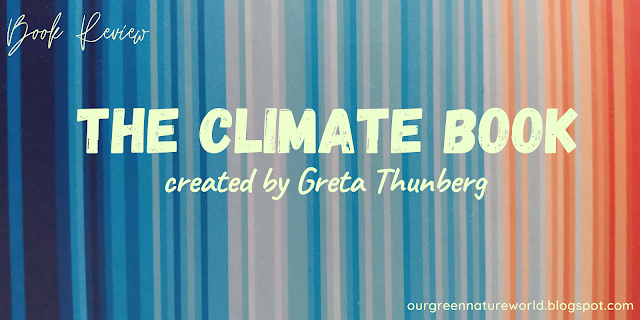Hi Everyone!
You may be aware that Wednesday was International Women's Day, so today I wanted to share a book review for a book written by one of the most inspiring women of our generation: Greta Thunberg. She is, of course, the legendary creator of the Fridays For Future movement and has inspired thousands of children to skip school on Fridays to protest for the climate. She recently compiled a book, simply entitled: The Climate Book. Here are my thoughts.
You may be aware that Wednesday was International Women's Day, so today I wanted to share a book review for a book written by one of the most inspiring women of our generation: Greta Thunberg. She is, of course, the legendary creator of the Fridays For Future movement and has inspired thousands of children to skip school on Fridays to protest for the climate. She recently compiled a book, simply entitled: The Climate Book. Here are my thoughts.
This is a compilation of articles and essays from the best climate scientists,
activists and high-profile people, which makes up, in my opinion,
the climate bible. It
quite literally encompasses everything you may want to know about the climate
crisis, from the science, to how it affects us, what we've done and have yet
to do, and so much more. This book is everything.
I have not yet read the whole thing, because let me tell you, this book is
HUGE. It's also of course very dense and there are certain parts which I have
little interest in as of yet, but there are several sections which I am very
excited to get to, such as The Truth About Government Climate Targets, Food
& Nutrition, Why Didn't They Act?, What Does Equity Mean To You, and in
true International Women's Day fashion, Women and the Climate Crisis.
There are so many parts of this book that I can't wait to read, and I know
that I have a lot to learn. Something that I think we can all learn from Greta
is the power of educating yourself on this issue. Because you can only change
when you fully understand the impacts of your actions, and you can only start
to inspire others to change when you can explain to them the reasons behind
what you are doing.
Having said this, there are so many small steps you can take, but they are
just not enough now, although, every little helps.
Something I absolutely love about this book is how it has bought together so
many different people, from so many different backgrounds, countries, fields
of expertise and essentially, lives. I think that this book does such a
fantastic job of encompassing everything, and the collaboration between
countries and so many different people is definitely a microcosm of the way
that countries need to come together to do something because ultimately, this
issue will affect everyone, if in varying ways.
I genuinely hope that some of you will be picking this book up, I truly can't
recommend it enough. I used it in the writing of one of our most viewed posts ever,
Should Everyone Switch To Electric Cars?, and will continue to use The Climate Book in writing posts on here. Thank
you so much for taking the time to be here today.
Your Green World Blog Team💚
p.s. this post was written by me, Zoë and I'm also a book blogger over at
zbestbooks.blogspot.com, I would love it if you could check it out! Thank you!


Comments
Post a Comment